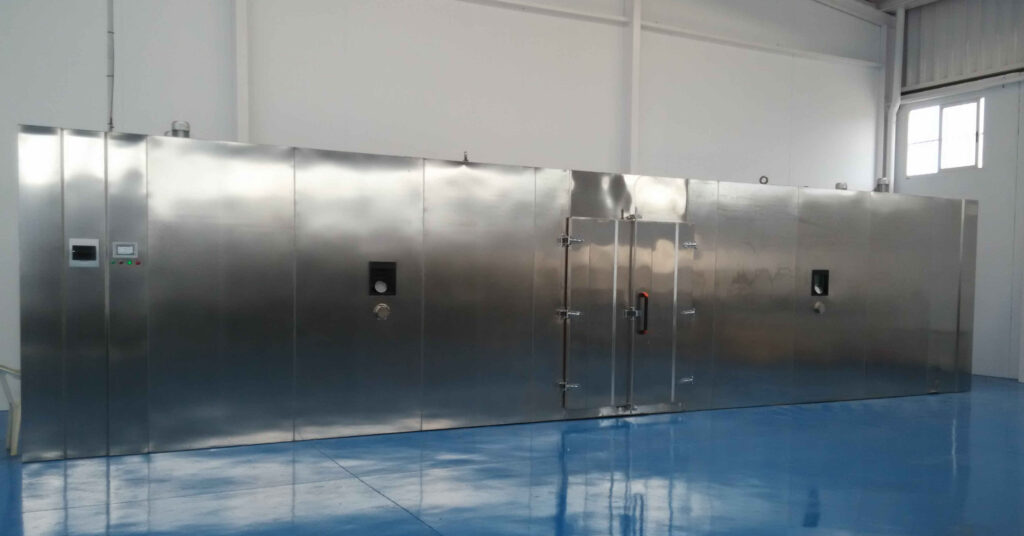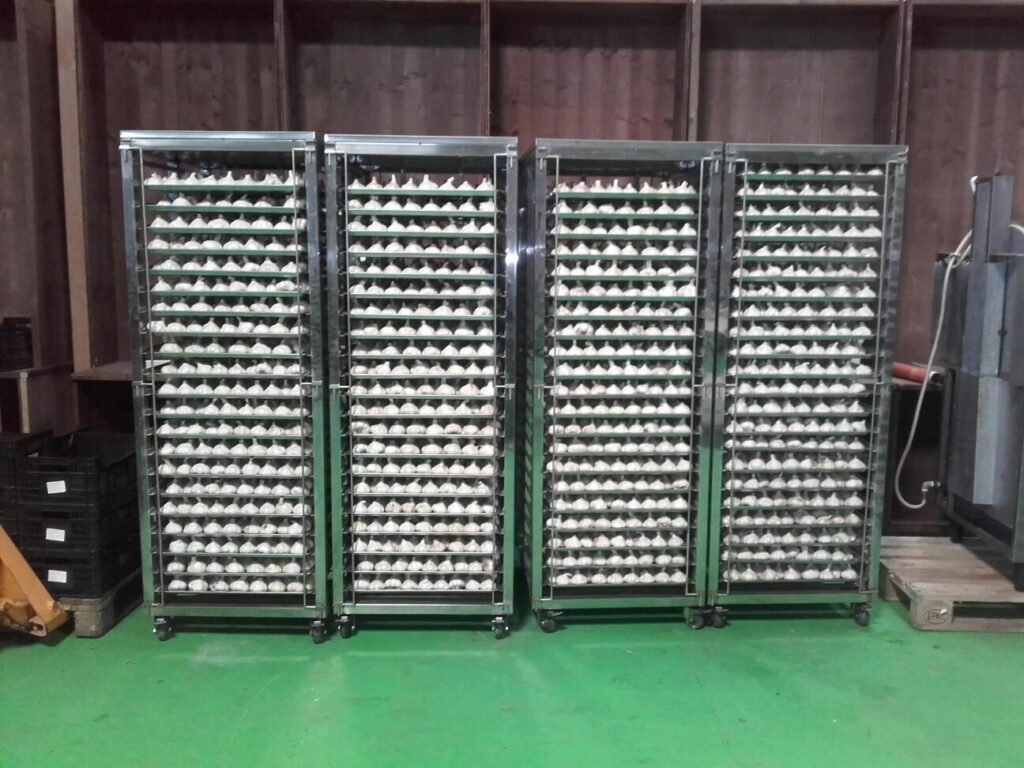biological-fermentation-machine-in-china-is-more-innovative
black garlic ferment machine in China is more and more advanced,
In China, black garlic equipment has been very popular more than ten years ago, and the degree of automation is very high. So far, it has been updated more than ten times. The black garlic equipment has been artificially heated, artificially humidified, and artificially turned from the earliest to the current automatic heating and humidification. , the production process does not require manual intervention, and the technology is very mature.
At present, black garlic machine equipment has been developed in a more energy-saving and intelligent direction


usage of steam inside machine
The Role of Vapor Pressure in Black Garlic Processing
Vapor pressure plays a crucial role in the fermentation (or more accurately, thermal-catalytic aging) process of black garlic, primarily by regulating moisture transfer, reaction rates, and flavor development to affect the final product quality. Here’s a detailed explanation of its mechanisms and effects:
1. Vapor Pressure and the Principle of Black Garlic Production
The production of black garlic is essentially non-enzymatic browning reactions (Maillard reaction + caramelization) in a high-temperature, high-humidity environment, rather than traditional microbial fermentation. The role of vapor pressure in this process manifests as:
- Temperature control (typically 60-80°C): Water evaporation at high temperatures generates steam, maintaining a high humidity (80-90%) in the closed environment and preventing dehydration and hardening of garlic bulbs.
- Pressure-assisted penetration: Steam pressure promotes uniform penetration of moisture and heat into garlic cloves, making reactions more thorough.
2. Specific Functions
(1) Moisture Regulation
- High vapor pressure → Slows moisture loss, maintains soft texture of cloves, and prevents carbonization.
- Low pressure (or insufficient humidity) → Garlic cloves become hard and dry, with uneven browning and potential bitter taste.
(2) Accelerated Reaction Rates
The moist-heat transfer in a steam environment is more efficient than dry heat, accelerating the breakdown of polysaccharides into reducing sugars (which react with amino acids in the Maillard reaction), forming black garlic’s characteristic dark color, sweetness, and umami flavor (e.g., 5-hydroxymethylfurfural, HMF).
(3) Retention of Flavor Compounds
Steam pressure in a closed environment reduces the loss of volatile sulfur compounds (like allicin), ultimately converting them into odorless but biologically active sulfur-containing antioxidants (e.g., S-allyl cysteine, SAC).
3. Differences in Vapor Pressure: Industrial vs. Home Production
| Condition | Industrial Production (Professional Fermentation Chamber) | Home Production (Rice Cooker/Oven) |
|---|---|---|
| Vapor Pressure Control | Precise (constant temperature/humidity + pressure regulation) | Unstable (depends on container sealing) |
| Risk | Low (standardized quality) | Prone to overdrying or mold (excessive humidity) |
4. Optimization Recommendations
- Home production: When using a rice cooker’s “keep warm” mode, add a small amount of water at the bottom (not touching the garlic) to maintain steam circulation, and check humidity regularly.
- Avoid high pressure: Vapor pressure ≠ high-pressure sterilization; excessive pressure (e.g., >1 atm) may destroy flavor precursors.
Conclusion
Vapor pressure is the core medium for heat transfer and moisture balance in black garlic “fermentation,” directly determining texture, color, and nutrient conversion efficiency. Its role is similar to a “water bath” in slow cooking—gently but continuously driving chemical reactions. For specific process parameters (e.g., temperature-humidity curves), further discussion is available!